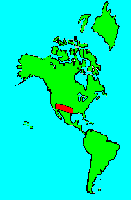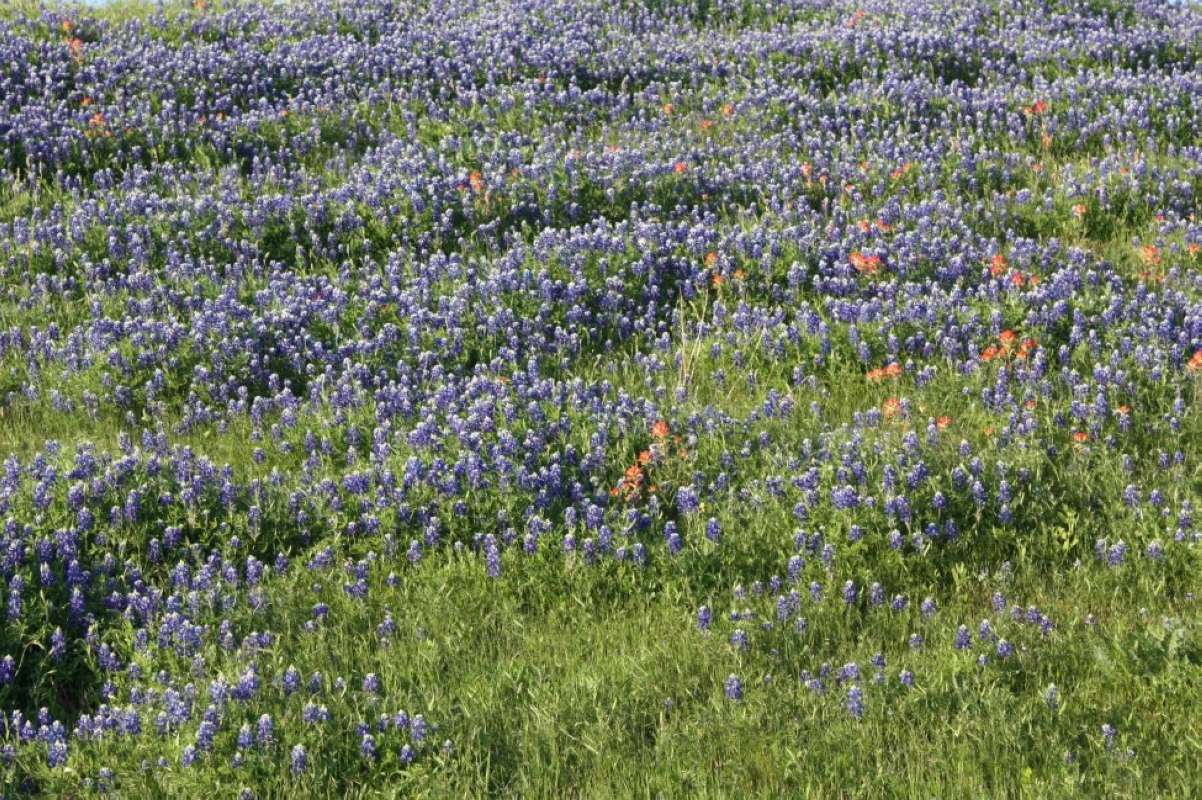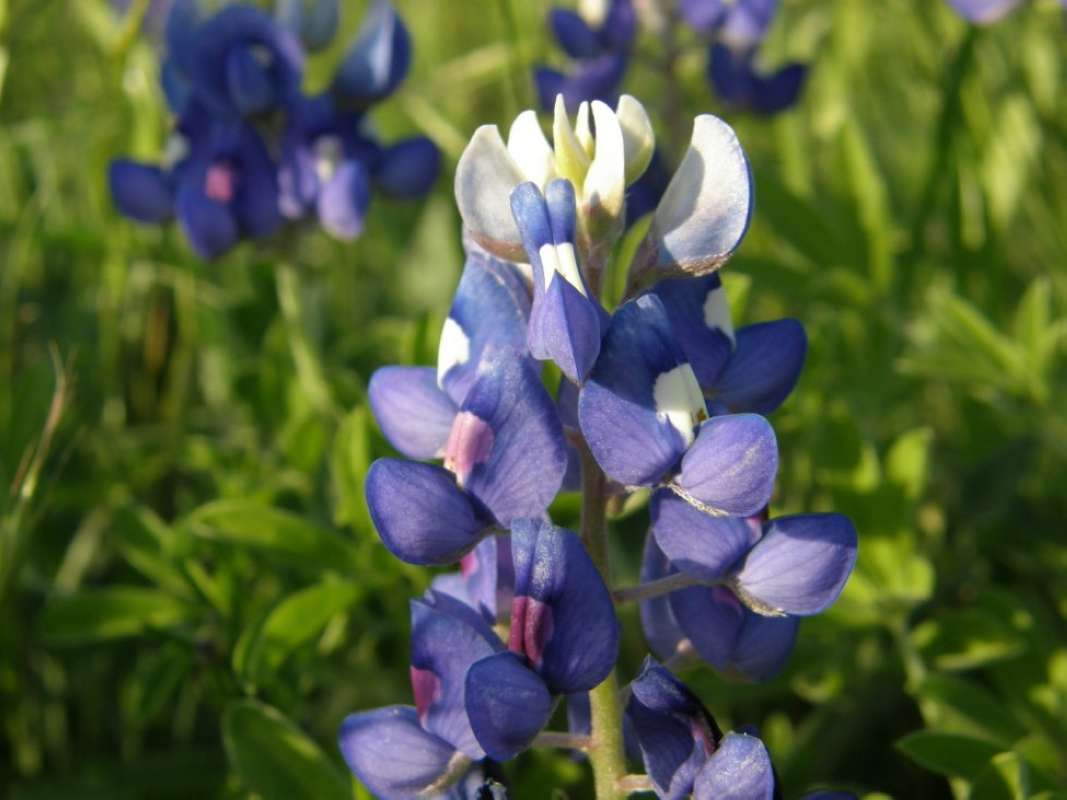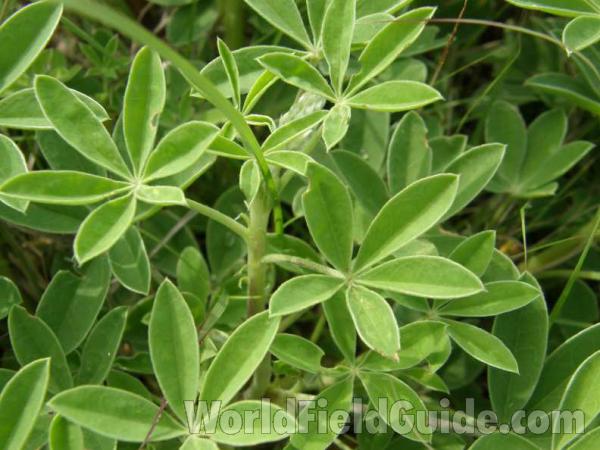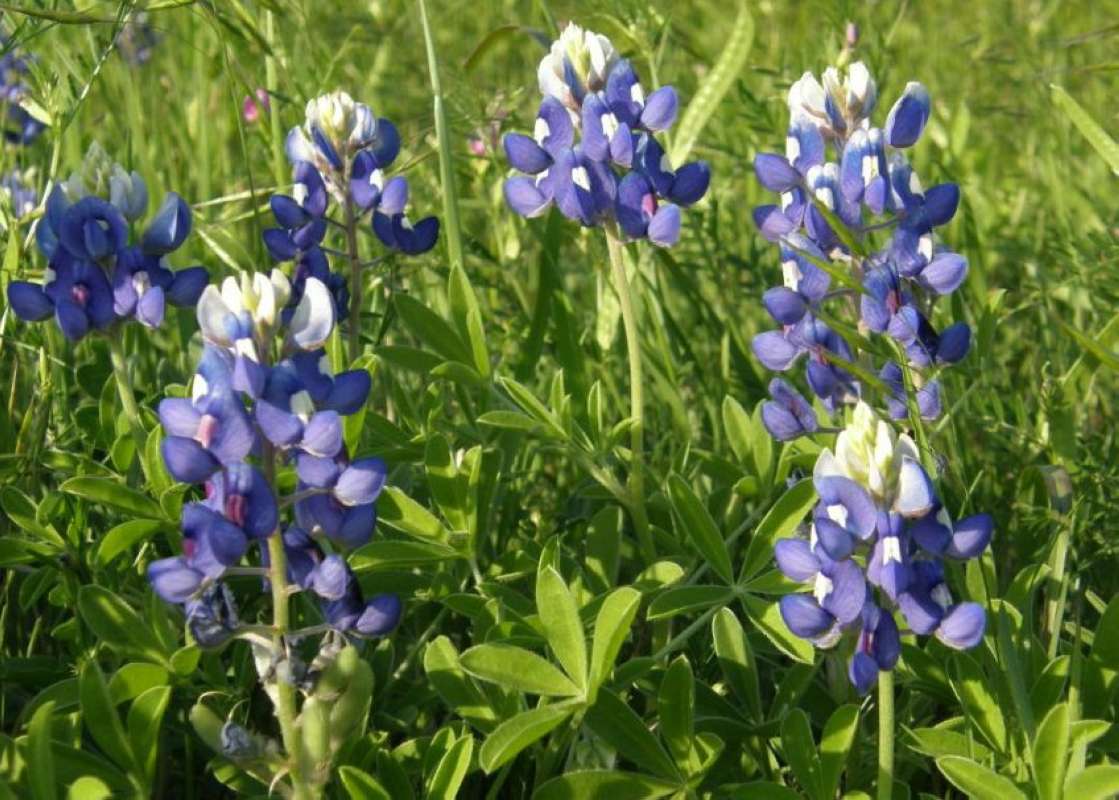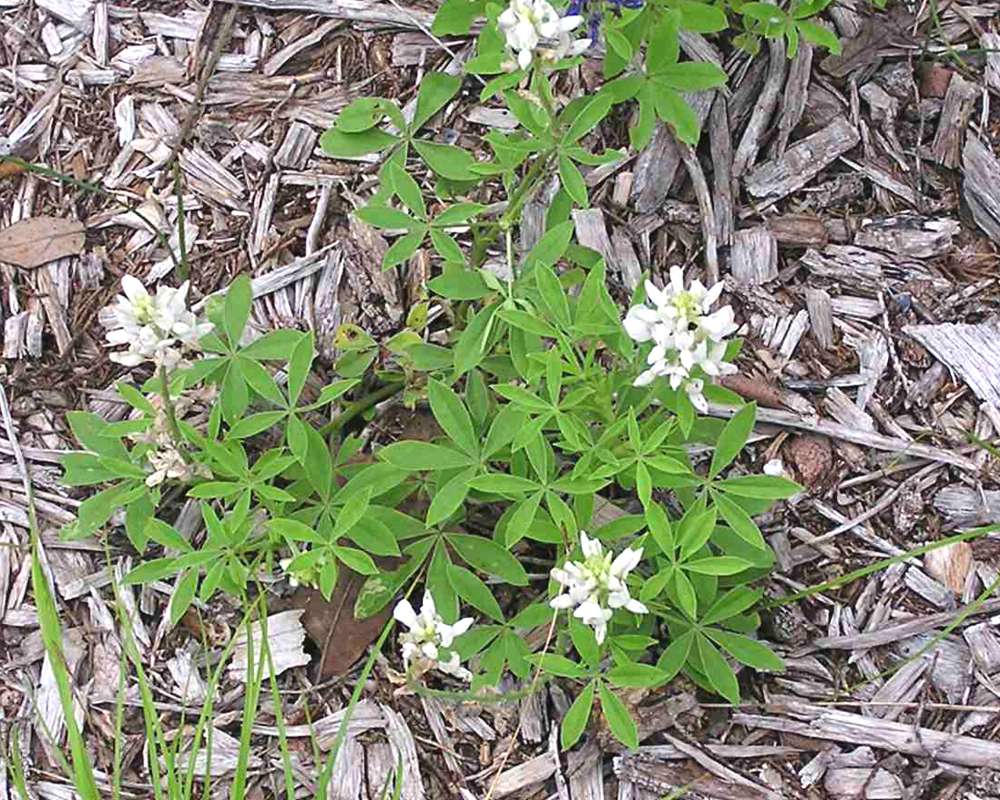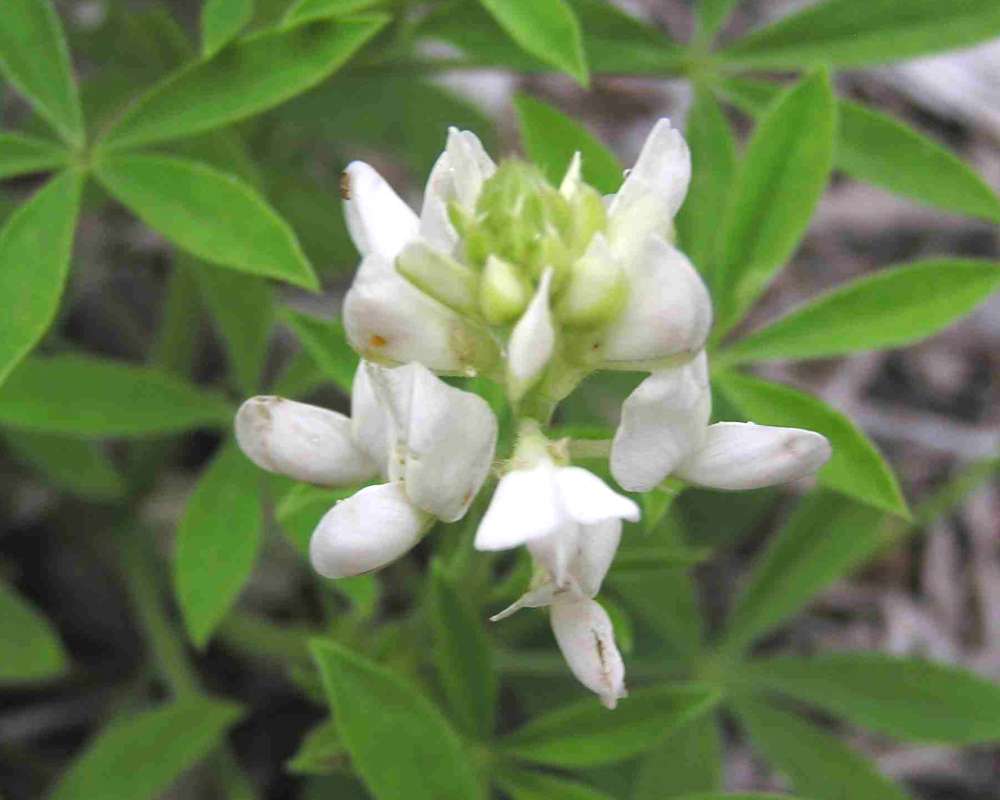SPECIES INFO
Texas bluebonnet (Lupinus texensis) is found in the eastern two thirds of Texas. The leaflets are pointed. The banner petal has a pale yellow spot that turns reddish as the flower gets older. The flowers are usually blue but white flowers are known.Lupinus genus (lupine) is native to North America, South America, Northern Africa, southern Europe, and the Near East. There are about 200 known species. These are usually herbs, rarely shrubs, with 7-15 foliolate (rarely 3-5 foliolate) leaves with showy flowers in terminal spikes or racemes. There are 152 species and 190 subspecies growing in greater North America.
Pea Subfamily (Lotoideae or Fabaceae) is a very large group of herbs, shrubs, and trees containing approximately 5,000 species organized into more than 300 different genera. Many of the plants in this group are very important agricultural crops and are noted for their nitrogen fixing ability.
Clovers, vetches, lupines, indigos, medics, locust trees, and wisteria belong here.
Pea or Legume Family (Leguminosae to Fabaceae) is one of the largest and most important families of plants. Peas, beans, clovers, alfalfa, and other related species are found here. This family of very important plants is usually broken into several sub-families to facilitate study. There are about 16,400 species in this family divided into about 650 different genera. There were, as of 1994, about 1,574 species established in greater North America. These were distributed in 158 different genera. Various authors divide this family in different ways.
Here they are arbitrarily separated into three parts: The Mimosa and Acacia group, the redbud and locust group (including the Robinia genus), and the Lotiodeae group which contains most of the herbs.
Rose Group (Order Rosales) contains many large and very important families. Included here are fruit trees in the family Rosaceae, the nitrogen fixing plants like clover and alfalfa (in the family Leguminosae), and a large assemblage of plants divided into over fifteen different families.
There has been considerable research in recent years as to the organization of the various plant families into orders. Although we certainly recognize and applaud those who are rearranging the families, we are staying with a more traditional approach for several reasons:
1) The traditional approach is well known, and still exists in many very popular field guides.
2) There are questions as to whether the new organizations are finalized.
3) We recognize there are essentially two different modern systems today: A European one and a North American one.
4) Furthermore, we recognize that most plant families and their boundaries are unchanged. In fact many excellent modern books present the families within the Monocots in a simple alphabetical sequence and the families within the Dicots in a simple alphabetical sequence.
Dicots (Dicotyledoneae Class) are the predominant group of vascular plants on earth. With the exception of the grasses (Monocots) and the Conifers (Gymnosperms), most of the larger plants that one encounters are Dicots. Dicots are characterized by having a seed with two outer shell coverings.
Some of the more primitive Dicots are the typical hardwood trees (oaks, birches, hickories, etc). The more advanced Dicots include many of the Composite (Aster) Family flowers like the Dandelion, Aster, Thistles, and Sunflowers. Although many Monocots reach a very high degree of specialization, most botanists feel that the Dicots represent the most advanced group of plants.
Seed plants (Phylum Embryophyta) are generally grouped into one large phylum containing three major classes: the Gymnosperms, the Monocots, and the Dicots. (Some scientists separate the Gymnosperms into a separate phylum and refer to the remaining plants as flowering plants or Angiospermae.)
For North American counts of the number of species in each genus and family, the primary reference has been John T. Kartesz, author of A Synonymized Checklist of the Vascular Flora of the United States, Canada, and Greenland (1994). The geographical scope of his lists include, as part of greater North America, Hawaii, Alaska, Greenland, Puerto Rico, and the Virgin Islands.
Kartesz lists 21,757 species of vascular plants comprising the ferns, gymnosperms and flowering plants as being found in greater North America (including Alaska, Hawaii, Greenland, Puerto Rico and the Virgin Islands.
There are estimates within the scientific world that about half of the listed North American seed plants were originally native with the balance being comprised of Eurasian and tropical plants that have become established.
Plant kingdom contains a large variety of different organisms including mosses, ferns, and seed plants. Most plants manufacture their energy from sunlight and water. Identification of many species is difficult in that most individual plants have characteristics that have variables based on soil moisture, soil chemistry, and sunlight.
Because of the difficulty in learning and identifying different plant groups, specialists have emerged that study only a limited group of plants. These specialists revise the taxonomy and give us detailed descriptions and ranges of the various species. Their results are published in technical journals and written with highly specialized words that apply to a specific group.
On the other hand, there are the nature publishers. These people and companies undertake the challenging task of trying to provide easy to use pictures and descriptions to identify those species.
